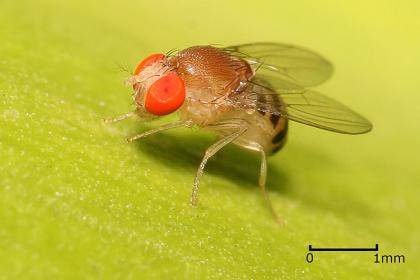
Mohamed A.F. Noor is the Earl D. McLean Professor and Associate Chair of Biology. He studies genetics and evolution and, like so many researchers, relies heavily on the humble fruit fly, Drosophila.
Fruit flies are the most studied model organism in biology, in part because they are quick to breed and require little space or care. Here, Noor talks about the tiny creatures and their idiosyncracies.1. THEY LIKE THEIR FRUIT ROTTEN
Although called "fruit flies," the geneticists' favorite fly, Drosophila melanogaster, will very rarely lay eggs into fruits on a tree, preferring instead fruits that have fallen down, punctured, and begun to ferment.2. VINEGAR WORKS BETTER THAN HONEY
The old saying, "You can catch more flies with honey than vinegar" doesn't apply to Drosophila melanogaster -- they'd prefer vinegar (though the combination works really well). D. melanogaster are also called "vinegar flies." They really enjoy wine and old onions in the grocery store.3. THERE ARE MORE THAN 1,500 SPECIES
Although often discussed as just "Drosophila," there are more than 1,500 different species of Drosophila, some of which specialize on particular hosts, ranging from mushrooms to cacti to crabs!4. THEY DON'T NEED THEIR HEADS
Headless Drosophila flies can live for several minutes and headless males can even be stimulated to court females.5. THEY'RE EASY TO OUTWIT
Eradicating fruit flies in residences or businesses is tough unless you know what they're breeding on. However, you can trap adults using a jar filled with an attractant (e.g., vinegar) and a few drops of soap, covered with a funnel pointing down into the jar. The flies enter but can't easily figure out how to escape, and they eventually fall in and drown.